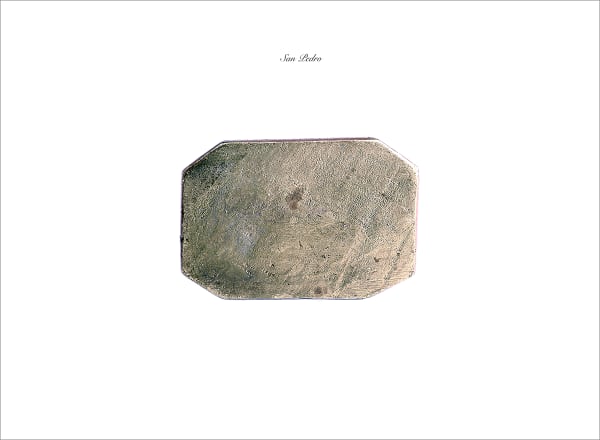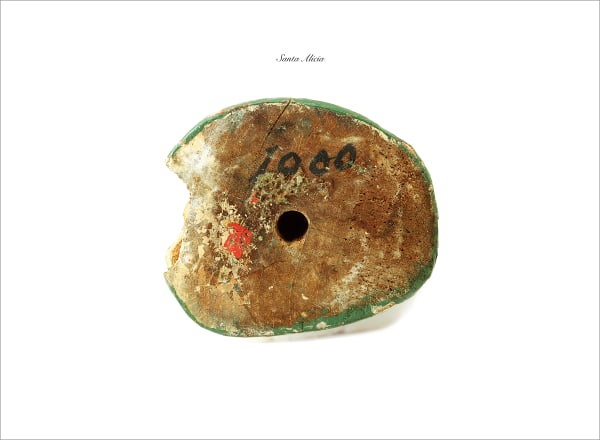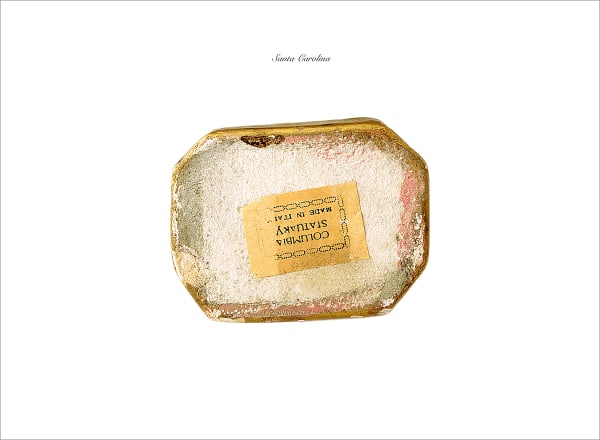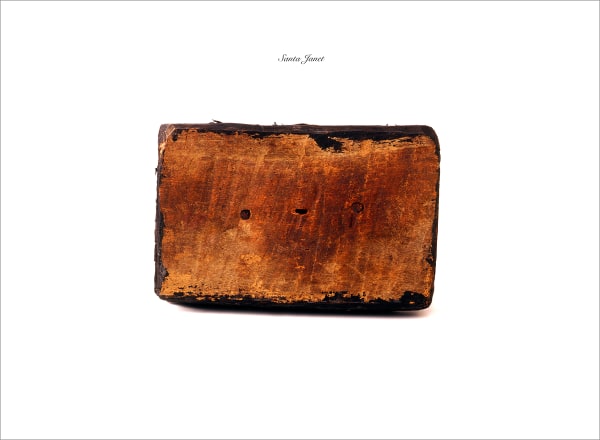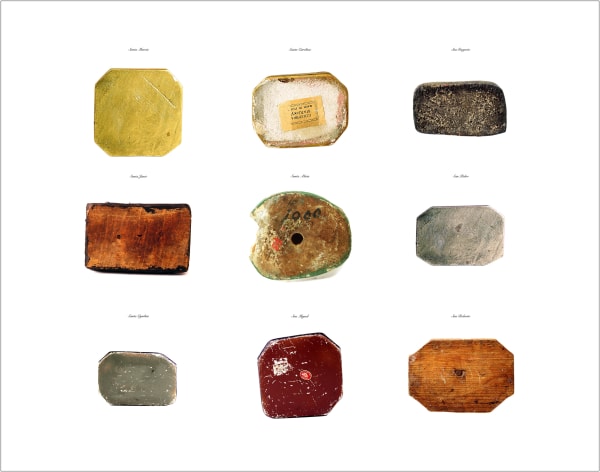Santos 1996
"Chuck Ramirez had all the optimism of an early 1970s sitcom. Like many of his generation, television told him that any obstacle could be overcome with the aid of well-designed props, carpet grass, cute clothes and a laugh track. The Brady Bunch demonstrated that strangers could eventually become a happy Technicolor family, complete with occasional musical acts and exotic vacations. This blind faith defined Chuck Ramirez, and he spent a lifetime transforming strangers separated by ethnicity, history and zip codes into a loving family.
His tastes eventually expressed a disdain for the values and aesthetics of the suburban, and like many young aesthetes in the Southwest, he eventually discovered a fascination with all things Mexican and mysterious, baroque and broken. Even though the Anglo elite had long treasured the artistic objects of Mexican culture, in the latter twentieth century, they fed a sense of pride and cultural identity of a new Mexican-American middle class. Chuck once stated in an interview that the Ramirez household certainly did not contain any santos. Yet it became an almost unspoken duty for him to regain ownership and interpretive authority over such iconography.
The nine geometric earth-tone shapes in his Santos series are photographs of the bottoms of figurines of saints kept in household altars. These figurines, some dating from the seventeenth century, were mined from the Infinito Botanica, a junk store/art gallery/herbal medicine shop/salon, which I operated from 1995 to 2000 beneath Chuck’s ravaged and ravishing apartment. I can still remember Chuck eyeing the dusty, candlelight-damaged, sometimes one-eyed and crumbling objects. He turned them from side to side and searched for meaning and a connection. Flipping them upside down, he found inspiration and satisfaction. Chuck’s unorthodox perspective of the Santos would result in fresh and contemporary photographs that appealed to the “smart set” as well as expressed a tangible link, albeit tenuous, to a Mexican baroque and Catholic heritage. By encoding his ambiguous objects with the Hispanicized names of The Brady Bunch family (an ironic wink reversing the once prevalent trend in San Antonio to Anglicize Hispanic names), Chuck gave a nod to the two worlds and the two faiths he negotiated and celebrated throughout his life: the ideals of a modern American dream and a sentimentality and reverence for a rich heritage often derided and quickly disappearing.
In connection with his Santos series, Chuck also created a body of work I remember him referring to as his Gap Santos. The series consists of almost nude models posing contrapposto, reminiscent of a favorite gay and Catholic icon, St. Sebastian, their crotches wrapped in a “loincloth” (one of Chuck’s white button-down Gap-brand shirts), and their eyes rolling in a look that combined sexual ecstasy and martyrdom. The period in which this series unfolded were heady times for Ramirez. It had not been long since Mexican identity and especially homosexual identity were something to be kept under wraps. Chuck instead found himself in an exalted position, with a willing stable of models and muses made up of the smartest and prettiest boys in the art community, some coming from prominent families.
The Brady Bunch got canceled. Mr. Brady died of AIDS and never got to incorporate classic Shakespeare into the script like he had wanted. Jan landed at least two roles playing a teenage prostitute, Alice is a lesbian and rumors still persist that Mrs. Brady once dated Greg. And our beloved Chuck Ramirez tragically died prematurely from a late-night bicycle accident. Many of us artists and believers in all things Chuck are still negotiating the blind faiths shared and exquisitely portrayed in his iconic images—images that will live on timelessly and commercial free in syndication for generations to come. Chuck would have liked that."
-Essay by Franco Mondini-Ruiz.
-
 Chuck RamirezSan Gregorio, 1996Pigment inkjet print22 x 30 in
Chuck RamirezSan Gregorio, 1996Pigment inkjet print22 x 30 in
55.9 x 76.2 cm -
 Chuck RamirezSan Miguel, 1996Pigment inkjet print22 x 30 in
Chuck RamirezSan Miguel, 1996Pigment inkjet print22 x 30 in
55.9 x 76.2 cm -
 Chuck RamirezSan Pedro, 1996Pigment inkjet print22 x 30 in
Chuck RamirezSan Pedro, 1996Pigment inkjet print22 x 30 in
55.9 x 76.2 cm -
 Chuck RamirezSan Roberto, 1996Pigment inkjet print22 x 30 in
Chuck RamirezSan Roberto, 1996Pigment inkjet print22 x 30 in
55.9 x 76.2 cm -
 Chuck RamirezSanta Alicia, 1996Pigment inkjet print22 x 30 in
Chuck RamirezSanta Alicia, 1996Pigment inkjet print22 x 30 in
55.9 x 76.2 cm -
 Chuck RamirezSanta Carolina, 1996Pigment inkjet print22 x 30 in
Chuck RamirezSanta Carolina, 1996Pigment inkjet print22 x 30 in
55.9 x 76.2 cm -
 Chuck RamirezSanta Cynthia, 1996Pigment inkjet print22 x 30 in
Chuck RamirezSanta Cynthia, 1996Pigment inkjet print22 x 30 in
55.9 x 76.2 cm -
 Chuck RamirezSanta Janet, 1996Pigment inkjet print22 x 30 in
Chuck RamirezSanta Janet, 1996Pigment inkjet print22 x 30 in
55.9 x 76.2 cm -
 Chuck RamirezSanta Marcia, 1996Pigment inkjet print22 x 30 in
Chuck RamirezSanta Marcia, 1996Pigment inkjet print22 x 30 in
55.9 x 76.2 cm -
 Chuck RamirezSantos Series (Brady Bunch), 1996Pigment inkjet print, edition of 678 x 108 in
Chuck RamirezSantos Series (Brady Bunch), 1996Pigment inkjet print, edition of 678 x 108 in
198.1 x 274.3 cm
(22 x 30 in, 55.9 x 76.2 cm each)Edition of 6




